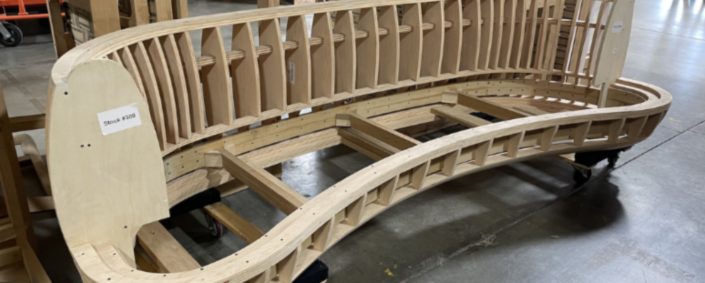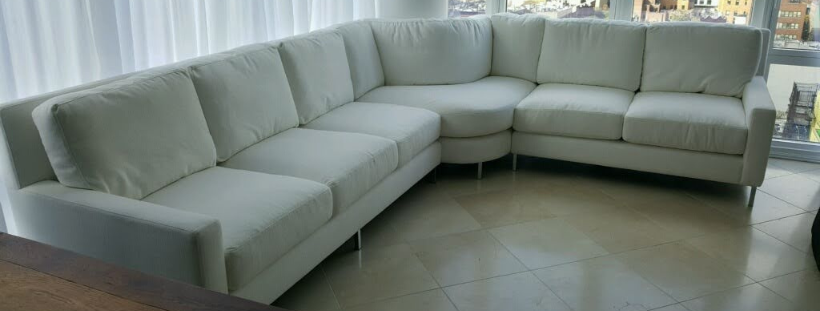Moving Furniture: 5 Pro Tips to Make It a Little Bit Easier

Whether you’re moving across town or you’ve decided to rearrange your home’s layout, you probably have some heavy lifting in your future—namely furniture. And thanks to its large size, weight, and awkward shape, furniture is notorious for being a huge pain to move around. However, it doesn’t have to be as hard as you think.
If you want moving furniture to be a little easier, follow these 5 pro tips from one of the best New York moving companies, Oz Moving.
1. Measure Twice, Move Once
The last thing you want is to haul that heavy wood dresser up the stairs just to find it won’t squeeze around the corner. So, to avoid situations like this, whip out the measuring tape.
You are going to not only want to measure your furniture but also:
The Path: Any narrow spaces you have to maneuver through, such as hallways, staircases, elevators, and entrances—to name a few.
Corners: Corner clearance is crucial to check when moving long pieces like couches, tables, and beds. If you find the piece doesn’t fit widthwise, see if you can tip it toward to ceiling to make it around the corner.
Doorways: Interior doors are usually 29 ¼ inches wide, and exterior door openings are often 35 inches, but this may vary—and every inch counts.
“My doorway is too narrow. Now what?”
Remove the door to gain up to 1 ¼ inch of width. Still not enough room? Pop off the door trim for an extra half-inch or so. Trim is usually only held on by a few small nails.
2. Work as a Team
To move large furniture, you are ideally going to want 3 people: 2 lifters and one spotter.
Lifters: Position a person on each side of the furniture and use simultaneous lifting to move furniture safely. Simultaneous lifting ensures that no one is stagnant when the lift occurs—AKA a top reason for injury—and that everyone is on the same page in general. A simple count to 3 before lifting or placing the furniture down can help the job go smoothly and protect the lifters from injury.
Spotter: An extra set of eyes that will be on the lookout for obstacles and help guide the operation verbally. Not 100% necessary, but often helpful.
No matter how many people you use, make sure to clear the pathway and the floors before you start your move. Stopping to clear the way during the process will not only slow down the move, but having clutter strewn about adds unnecessary danger.

3. Don’t Lift …
Unless you have to. When moving a piece across a single floor, look to these solutions instead.
Slide: Dragging furniture as-is is a recipe for damage, so you are going to want to use some furniture sliders. For wooden floors, tile, or concrete, use a moving blanket or carpeted pads under corners or legs. For traveling across carpeted areas, opt for plastic sliders.
To use sliders:
- Gently tip the furniture on to 2 legs or a bottom edge.
- Place the sliders or pads under the 2 upward legs or corners.
- Repeat on the other side.
- Place the furniture back down.
- Push to slide.
Wheel: A dolly or hand truck can help you get your furniture moved with minimal risk of personal injury and damage to your home. Simply just position the dolly under the piece, tilt the dolly, and away you go. These can often be rented through moving companies or purchased from home improvement stores.
4. Decrease the Size
The weight and bulk of furniture can be a big hindrance when it comes to moving, so where possible, make your pieces smaller. This will help your furniture fit through narrow pathways and make them a lot lighter to move.
Drawers: Take out any drawers before moving. Not only will this eliminate some weight, but it can also help give you a better grip on the piece.
Disassemble: If you have furniture that comes apart, take full advantage and start disassembling. Take pictures as you go and make sure to label any hardware clearly if you’re worried about putting it back together.
Can’t disassemble the furniture yourself? Call in the professionals. Dr. Sofa will take any piece of furniture apart and reassemble it in its new space.
5. Secure the Furniture
Securing your furniture before moving keeps things from flying open or falling off during the moving process—both of which can shift the weight of the piece, causing damage or injury.
Stretch Wrap: Get an industrial-sized roll of stretch wrap and wrap it around the furniture to keep cabinets, pulls, and other loose parts from clanking around. Make sure to rid the furniture’s surface of all dust and debris before wrapping to eliminate the risk of scratching. Need extra protection? Wrap the furniture in a moving blanket for some added padding before using the stretch wrap.
Painters Tape: This method is less recommended, but works well for short-term moves, like shifting furniture around the house. Use painters’ tape to secure cabinets and other loose bits. Just be mindful of the finish of a piece with his method. While painter’s tape is generally okay for cheaper pieces like IKEA or other furniture of lower value, we do not recommend for higher-end pieces or furniture that has a delicate finish.

If All Else Fails
Look to professional movers. They have the muscle, know-how, and equipment to maneuver your furniture through your home with ease. Plus, getting someone else to move your bulky furniture means you free up your time and eliminate the risk of personal injury.
And no matter how you decide to move your furniture, be safe. Take the time to stretch beforehand, lift with your legs, and don’t rush. Slow and steady wins the race—and keeps both you and your furniture safe.











